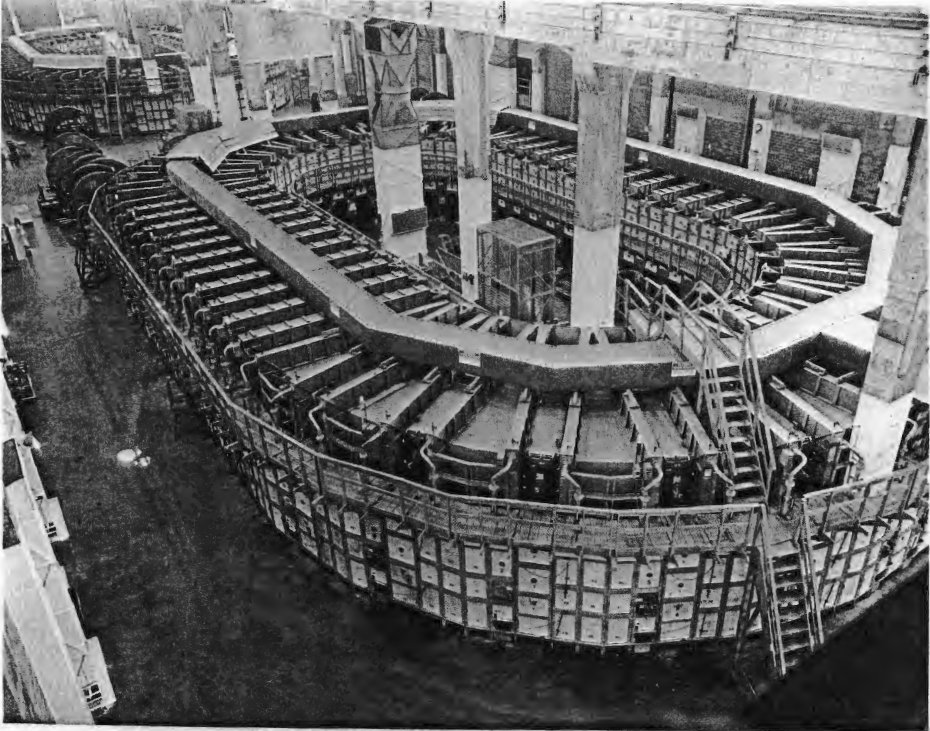Bunch-Hellemans, The Manhattan project
Several innovations in science and technology, such as radar, early computers, large liquid-fueled rockets, penicillin, and the insecticide DDT, came in response to military needs during World War II. Of these, the construction of the atomic bomb and the subsequent harnessing of nuclear energy are probably the most dramatic scientific and technical results of the scientific effort during the war — although in terms of winning the war, radar and computers were both more important.
Atomic weapon development originated with scientists. Because of fear that Nazi Germany might develop an atomic bomb — later proven unfounded — Leo Szilard persuaded Albert Einstein to write a letter to U.S. President Franklin D. Roosevelt, in which Einstein suggested that the fission of uranium could be used to produce an atomic explosion. This letter resulted in the establishment of the largest single enterprise in the history of science up to that time. The operation, later known as the Manhattan Project, comprised 37 installations in 19 states and Canada, and employed 43,000 people. It ran on a budget of $2.2 billion. A large number of physicists, among them the best European scientists who had fled the Nazis, joined the project. Physicists were recruited from college campuses all over the United States as well. New cities emerged as a direct result of the Manhattan Project.
Los Alamos, New Mexico, was the site where the atomic bombs were designed and built under the directorship of the physicist J. Robert Oppenheimer. The project in 1943 took over the Los Alamos Ranch School, a residential school for boys emphasizing outdoor activities. The school had an enrollment of 50 students. With new buildings constructed on the site and on nearby property, the facility came to house 5700 scientists, technicians, and their families by 1945. Oak Ridge, Tennessee, where the gaseous diffusion plant for the separation of uranium-235 from uranium-238 was located, reached a population of 79,000 in less than two years. Hanford in the state of Washington housed the nuclear reactors for the transmutation of uranium- 238 to plutonium-239 and reached a population of 60,000.
Notwithstanding the enormous size of the organization, the American government succeeded in keeping the whole operation a secret. Most of the employees, and even some scientists, did not know the exact aim of the organization. Secrecy was strictly enforced. Scientists traveled under assumed names. For example, Enrico Fermi was disguised as Henry Farmer, and Eugene Wigner as Eugene Wagner. All telephone conversations at Los Alamos were under surveillance and were interrupted if the military authorities judged them a threat to security. Sensitive matters were referred to by code words; plutonium was called 49 (94 is its atomic number) and uranium “tube alloy.” The massive effort resulted in the first experimental explosion of a nuclear device in July 1945, quickly followed by the dropping of atomic bombs on the Japanese cities Hiroshima and Nagasaki on August 6 and 9, respectively, 1945. By then Germany had surrendered and Japan was nearly defeated, but the dramatic death and destruction of whole cities propelled Japan into surrendering without an Allied invasion.
After the war, the facilities continued at first to design and make nuclear weapons, but gradually Los Alamos became a national physics laboratory with many projects. Oak Ridge is also a national laboratory, but continues in the business of enriching uranium for peaceful nuclear power projects, while Hanford was dismantled (except for a museum about the Manhattan Project), becoming a major environmental problem of the 21st century.
